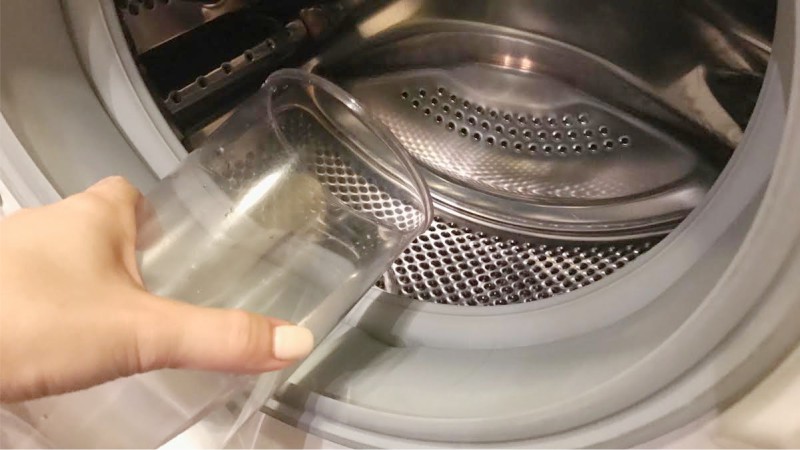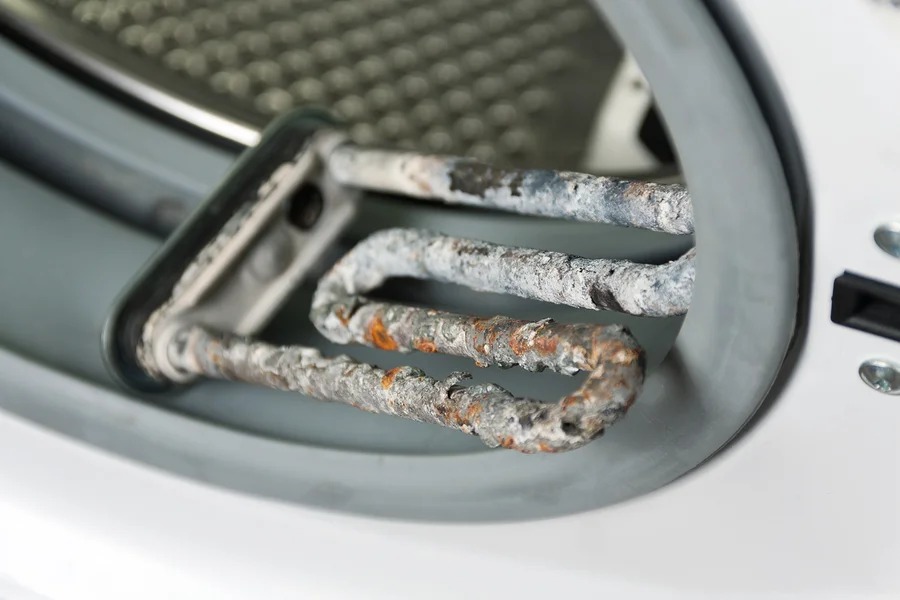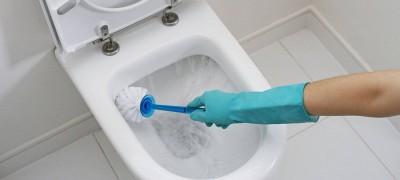Comprehensive cleaning of the washing machine
Automatic washing machines save the housewife's energy and her time. They wash and clean laundry regularly, but remember that they themselves also need cleaning. The most practical, effective and inexpensive methods of how to clean a washing machine are given in this article.

Washing machine cleaning methods
From limescale
If the heating element is not cleaned from it in a timely manner, the machine will first wash the dirty things loaded into its drum longer, then it may completely break down. The easiest way to clean the heating element from limescale layers is to add tribasic carboxylic or citric acid to the compartment intended for the powder, and then turn on any high-temperature washing mode. When heated, acid will corrode not only scale deposits, but also already caked, hardened limestone. The drum will also be cleaned.

How much to add depends on the degree of pollution, the size of the machine, what kind of acid is used. In particular, there are about 30 grams of citric acid per kilogram of laundry loaded into the drum.

Important. Do not combine washing with cleaning the machine. The fabric can be damaged so much that even the taken out linen cannot be returned to charity.
Often, table vinegar is used for descaling the heating element. It is necessary to pour 1 or 2 cups of a 9% acetic acid solution into the dish for receiving detergents, then set the washing mode with a high temperature and turn on the machine.

Less commonly, baking soda is used for descaling. It needs to be diluted with water in a ratio of 1 to 1 and the resulting paste is used to process the inside of the machine (hatch cuff, drum, tray). After about an hour, start a short wash cycle. You can use baking soda and soda ash. These substances are much more corrosive than food, so work with gloves, goggles and a face shield.

From the dirt
The drum itself, after getting rid of scale, will not need special cleaning from dirt. Another thing is the detergent tray and the compartment for it. Remove the tray completely. How exactly depends on the model of the washing machine; the instructions for it should be indicated. For cleaning, you can use folk remedies, specialized or household chemicals.

It is enough to cover the container for receiving the powder with the selected substance for 30-45 minutes. Then use a sponge (in hard-to-reach places with a toothbrush) to clean it. After that, it must be wiped dry and reinserted when the container compartment is cleaned.

Here you have to tinker with him. First, there are a lot of protruding parts, indentations and hard-to-reach places. Secondly, when wiping, it is very easy to damage the nipple. The most correct thing would be to spray the inside of the compartment with a cleaning agent from a spray bottle and leave it for several hours, then gently wipe everything with a toothbrush.

At the end of the washing machine cleaning process, wipe with a damp cloth with or without detergent (if not very dirty) the protruding buttons, the door inside and outside, the top and side panels.
From an unpleasant smell
One of the most common causes of "odors" from a washing machine is detergent particles stuck inside. Getting rid of them means getting rid of the smell.

Another common cause of stench is a dirty drain filter. He catches all sorts of debris, descending from the machine into the sewer: hair, particles of soil, feathers, etc. If you do not clean it up for a long time, over time it will all start to decompose and rot. To eliminate the smell, the filter should be cleaned, and do not forget about the hose going to it. First you need to take them off.

Important! Before disconnecting the hose, be sure to unplug the washing machine and turn off the water supply.
The procedure is usually not complicated and consists of the following steps:
- Removing the protective panel. Most washing machines have it in one of the bottom corners.
- Draining water from the machine. Place a container or dry cloth under the dripping liquid.
- Removing the filter from the machine. Unscrewing goes counterclockwise.

Rinse the filter under running water and reinsert.
How to remove the hose depends on the specific model. After removal, clean it with a wire rope with a wire brush at the end.
Other common causes of unpleasant odors from the washing machine include limescale deposits and dirty detergent drawers. How to clean them is described above.

Industrial cleaning products
Among them there are universal ones that clean washing machines from dirt, scale, etc. There are also highly specialized ones.
- "Dr. Beckmann ". Washing machine cleaner from a German manufacturer. Besides the fact that it gets rid of scale, dirt and other all kinds of deposits, specialized additives protect metal parts from premature wear.
- "Magic Power". Also from a German company. Effectively helps against limescale. The composition contains acid, therefore, when using, you must strictly follow the instructions.
- "Topperr". Another German, this time the manufacturer is the well-known German company "Bosch" in our country. Removes not only scale from the machine, but also dirt and salt deposits.
- "Kristall-fix". Russia. The product contains citric acid and a water-soluble polymer. Begins to work effectively even at a water temperature of 60 degrees.
- "Doctor TEN." Russia. Quickly removes scale from any household appliances, including washing machines.
- Sandokkaebi. Korea. Relatively cheap medium-effective descaler.
- Antikalk for Washing Machines by Sano. Israel. Descaling gel.
If you want to save money, then there is how you can clean the washing machine with simple, folk remedies.
Folk cleaning methods
Vinegar and baking soda are good for removing limescale. Mix half a glass of baking soda with the same amount of water. Send the resulting paste to a container for washing powder. Pour 9% vinegar into the drum. Then run the machine in a high temperature wash cycle.

Another method. Take a tablespoon of baking soda and 150 g of citric acid. Mix the two powders thoroughly and place in the detergent container. The drum does not need to be filled with anything, it remains empty. The washing temperature is set to the maximum. The program must ensure the passage of all its stages, incl. rinsing.

How to clean the cuff and other elastic bands in the washing machine
Sealing gum is a favorite habitat for mold, dirt is constantly stuffed there too. For cleaning, use soda, Pemolux, Duckling, Domestos, Komet or another similar tool. Apply it to a damp cloth (sponge). Pull the elastic towards you, gently wipe the metal body behind it, and then the rubber cuff. At the final stage, everything should be wiped with a clean, damp cloth.

Important. Be careful when using chlorine-based descalers in washing machines. Rubber hardens and cracks with frequent use.

Prevention and maintenance of the washing machine
Some of them will seem obvious to you, but it is they who, due to laziness, oversight or other reasons, are most often not respected, creating conditions for the occurrence of most breakdowns.
- Powder, bleach and fabric softener should be put into the machine exactly as instructed. More of them will not improve washing, but will only settle in different parts of the machine.
- An open washing machine does not look very attractive, but mold will not start inside or it will be much less.
- Clean your washing machine at least every 3-4 months.
- Remember to check your pockets before putting your items in the drum. Anything left in them can clog the drain filter.
- If the water is hard where you live, make sure to add emollients to the powder.
- Do not use your washing machine as a storage cabinet for dirty items. Put them down, try to wash and take out as soon as possible.
As it is clear from the above, effective cleaning of the washing machine is possible at home, but it is better not to bring it to heavy dirt. Everything must be done on time.

VIDEO: How easy it is to clean a washing machine.













